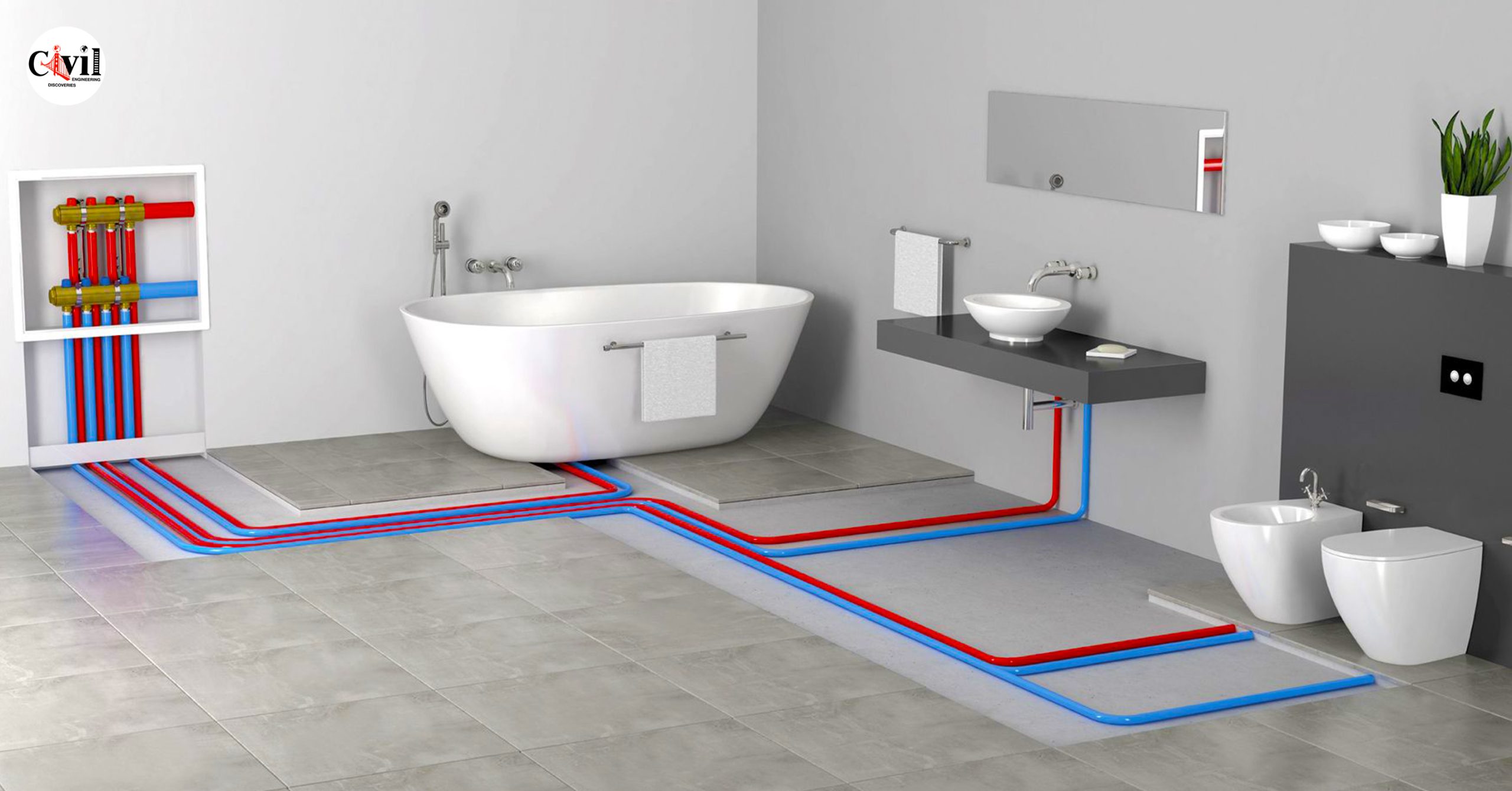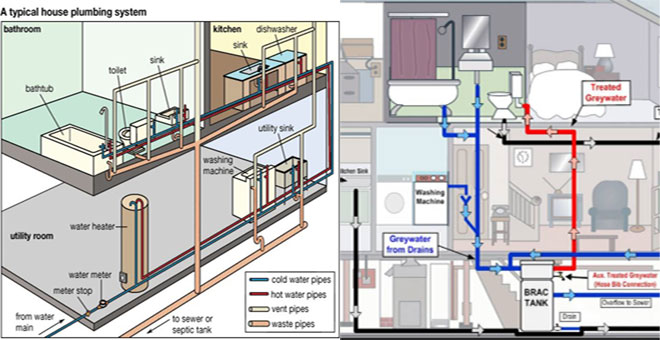How Your Property's Plumbing System Works: Design
How Your Property's Plumbing System Works: Design
Blog Article
What're your thoughts on The Inner Workings of Your Home's Plumbing?

Comprehending just how your home's pipes system functions is essential for every property owner. From delivering tidy water for drinking, cooking, and bathing to safely eliminating wastewater, a well-kept pipes system is essential for your family members's health and wellness and convenience. In this comprehensive overview, we'll explore the complex network that comprises your home's pipes and offer tips on upkeep, upgrades, and dealing with usual issues.
Intro
Your home's plumbing system is greater than simply a network of pipes; it's an intricate system that ensures you have access to tidy water and efficient wastewater elimination. Knowing its elements and how they interact can help you stop pricey repairs and guarantee everything runs smoothly.
Basic Components of a Plumbing System
Pipes and Tubes
At the heart of your pipes system are the pipelines and tubes that lug water throughout your home. These can be made from numerous products such as copper, PVC, or PEX, each with its advantages in terms of resilience and cost-effectiveness.
Fixtures: Sinks, Toilets, Showers, and so on.
Components like sinks, bathrooms, showers, and bath tubs are where water is made use of in your home. Understanding exactly how these fixtures attach to the plumbing system helps in identifying problems and planning upgrades.
Valves and Shut-off Points
Shutoffs regulate the circulation of water in your pipes system. Shut-off valves are vital throughout emergencies or when you need to make repair work, allowing you to isolate parts of the system without interrupting water circulation to the whole residence.
Water Supply System
Main Water Line
The main water line connects your home to the metropolitan water supply or an exclusive well. It's where water enters your home and is dispersed to numerous components.
Water Meter and Stress Regulatory Authority
The water meter measures your water usage, while a pressure regulator ensures that water flows at a safe pressure throughout your home's plumbing system, avoiding damages to pipes and fixtures.
Cold Water vs. Hot Water Lines
Understanding the distinction in between cold water lines, which provide water straight from the major, and warm water lines, which bring warmed water from the water heater, assists in fixing and preparing for upgrades.
Drainage System
Drain Pipes and Traps
Drain pipelines carry wastewater far from sinks, showers, and bathrooms to the sewer or septic system. Catches stop sewer gases from entering your home and additionally catch debris that might create clogs.
Air flow Pipes
Ventilation pipes enable air right into the drainage system, preventing suction that could slow drainage and cause traps to empty. Proper air flow is vital for keeping the honesty of your plumbing system.
Significance of Proper Water Drainage
Guaranteeing appropriate water drainage stops back-ups and water damages. Frequently cleaning up drains pipes and maintaining catches can avoid costly repair work and prolong the life of your pipes system.
Water Furnace
Sorts Of Hot Water Heater
Hot water heater can be tankless or typical tank-style. Tankless heating systems heat water on demand, while storage tanks keep heated water for instant usage.
Just How Water Heaters Attach to the Pipes System
Recognizing just how hot water heater attach to both the cold water supply and warm water circulation lines helps in detecting problems like insufficient warm water or leakages.
Maintenance Tips for Water Heaters
Routinely flushing your hot water heater to eliminate sediment, examining the temperature setups, and evaluating for leaks can expand its lifespan and enhance power efficiency.
Usual Plumbing Problems
Leakages and Their Causes
Leaks can happen as a result of maturing pipelines, loosened fittings, or high water pressure. Addressing leakages promptly avoids water damages and mold development.
Blockages and Clogs
Blockages in drains and toilets are typically brought on by flushing non-flushable products or a build-up of oil and hair. Using drain screens and bearing in mind what goes down your drains can protect against clogs.
Indications of Pipes Issues to Expect
Low tide stress, slow-moving drains pipes, foul odors, or abnormally high water costs are indicators of possible plumbing problems that ought to be dealt with promptly.
Pipes Maintenance Tips
Normal Examinations and Checks
Arrange annual plumbing evaluations to catch issues early. Look for indicators of leakages, rust, or mineral buildup in faucets and showerheads.
DIY Maintenance Tasks
Simple jobs like cleaning faucet aerators, checking for toilet leaks making use of color tablets, or insulating revealed pipelines in cool climates can stop significant pipes concerns.
When to Call a Specialist Plumbing
Know when a pipes concern calls for specialist know-how. Trying complicated repair services without appropriate understanding can lead to even more damages and higher fixing prices.
Updating Your Pipes System
Reasons for Updating
Upgrading to water-efficient components or changing old pipes can improve water top quality, minimize water bills, and raise the value of your home.
Modern Plumbing Technologies and Their Advantages
Check out technologies like clever leak detectors, water-saving commodes, and energy-efficient hot water heater that can save cash and minimize environmental influence.
Expense Considerations and ROI
Compute the ahead of time prices versus long-lasting savings when taking into consideration pipes upgrades. Several upgrades pay for themselves through lowered energy costs and less repair services.
Environmental Impact and Preservation
Water-Saving Components and Appliances
Setting up low-flow faucets, showerheads, and toilets can dramatically reduce water use without sacrificing performance.
Tips for Lowering Water Use
Easy routines like repairing leaks without delay, taking much shorter showers, and running full lots of washing and dishes can preserve water and reduced your utility costs.
Eco-Friendly Plumbing Options
Consider lasting plumbing materials like bamboo for floor covering, which is durable and environment-friendly, or recycled glass for countertops.
Emergency situation Preparedness
Actions to Take Throughout a Plumbing Emergency
Know where your shut-off shutoffs are located and how to turn off the water in case of a ruptured pipe or major leak.
Relevance of Having Emergency Situation Calls Handy
Keep contact information for local plumbers or emergency situation services readily offered for quick response throughout a pipes dilemma.
DIY Emergency Situation Fixes (When Suitable).
Short-term repairs like using air duct tape to patch a leaking pipeline or positioning a container under a trickling faucet can lessen damage up until a specialist plumbing technician shows up.
Verdict.
Understanding the anatomy of your home's plumbing system equips you to keep it efficiently, conserving time and money on repair work. By following regular maintenance routines and staying notified regarding modern-day pipes modern technologies, you can guarantee your plumbing system runs efficiently for many years to find.
Exploring Your Homes Plumbing Anatomy
Water Supply System
Main Water Line: This is where water enters your home from the municipal supply or a private well. Water Meter: Typically located near where the main water line enters the property, it measures the amount of water used. Shutoff Valve: It s crucial to know where this is in case of emergencies. It allows you to turn off the water supply to the entire house. Pipes and Fittings: These distribute water throughout your home. Materials can include copper, PVC, or PEX. Drain-Waste-Vent (DWV) System
Drains: Located in sinks, showers, and tubs, these carry wastewater away. Traps: U-shaped pipes under sinks that hold standing water, blocking sewer gases from entering the home. Vents: Pipes that lead from the DWV system to the outside, preventing vacuum formation and allowing gases to escape. Sewer Line: Carries all wastewater from the home to the municipal sewer system or a septic tank. Fixtures and Appliances
Sinks, Toilets, and Showers Dishwashers and Washing Machines Water Heaters Maintenance Tips
Regularly check for leaks in exposed pipes and around fixtures. Inspect the water heater annually for signs of wear. Clean drains and traps to prevent clogs and odors. Know how to shut off water to individual fixtures. When to Call a Professional
Major leaks or burst pipes Installation of new pipes or fixtures Septic tank issues Remodeling projects that involve plumbing changes Conclusion
Understanding the anatomy of your home's plumbing is key to maintaining a functional and efficient system. Regular checks and knowing when to call in the experts can save you time, money, and stress.
https://www.mavyn.com/blog/exploring-your-homes-plumbing-anatomy

I'm certainly very intrigued by Exploring Your Homes Plumbing Anatomy and I really hope you liked the entire article. Do you know about another individual who is fascinated by the niche? Feel free to share it. We enjoy your readership.
Get A Quote Report this page